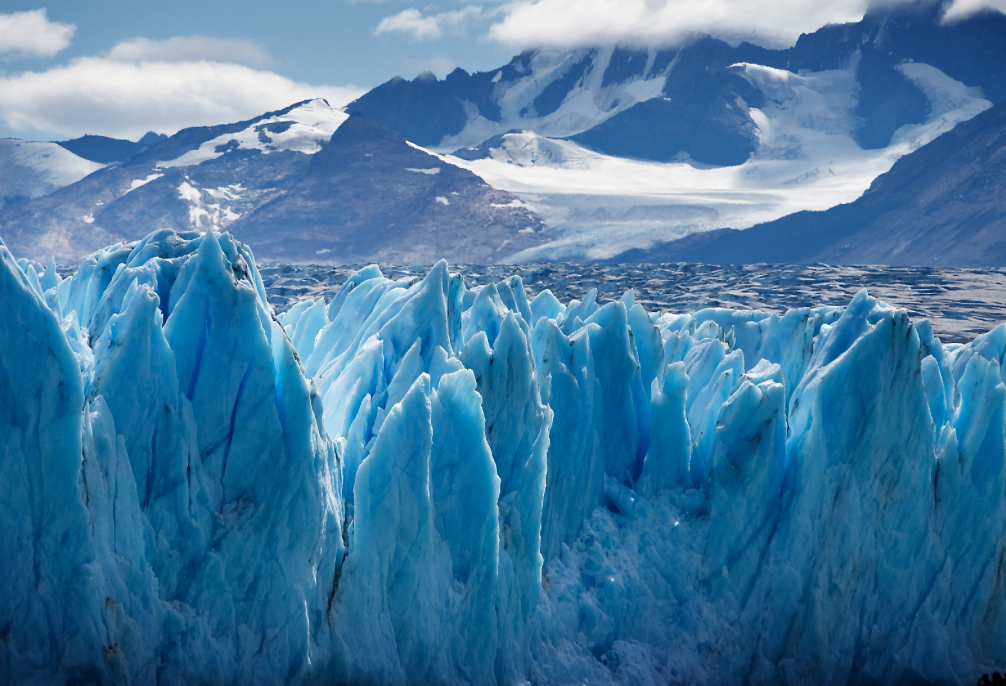
Calving front of the Upsala glacier in Patagonia, Argentina.
http://upload.wikimedia.org/wikipedia/commons/d/d4/Upsala_Glacier_3.jpg
How a glacier will move depends on how much stress and strain it is subjected to by the overlying ice.
The stress an object experiences depends on how much it is pushed or pulled by
an applied force. In glaciers, the shear stress results from the vector component of force that is
parallel to the cross-sectional area of the glacier, and is given by:
τ = ρ g h sinθ,
where τ is the shear stress, ρ is the density of ice (around 900 kg/m^3), g is the acceleration due
to gravity, h is the thickness of the cross-section of ice, and θ is the slope of the surface of the glacier.
The strain of an object is how it changes in length and shape to the stress applied to it.
To determine the flow of a glacier, we look at the strain rate.
1. What is a glacier?
2. Stress and Strain
3. How do glaciers flow?
4. Basal Sliding
Bibliography